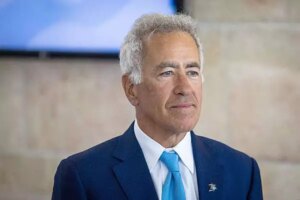
2025-11-28T16:36:16+00:00
font
Enable Reading Mode
A-
A
A+
Shafaq News – Beirut
The Lebanese Army said it has
completed most of the initial stage of the “Homeland Shield” plan in southern
Lebanon, reporting tens of thousands of violations recorded since the
ceasefire.
The Army’s Orientation
Directorate said troops now operate from more than 200 positions south of the
Litani River. The deployment follows a government directive issued on 5 August
2025 authorizing the Army to disarm all independent militias, including
Hezbollah, by the end of the year.
According to the Army, the
Homeland Shield plan consists of five integrated phases, starting with the
border towns south of the Litani and then moving toward areas south of the
Awali River in stages. So far, forces have surveyed 80% of the first
sub-area—the frontline border towns—and 34% of the second sub-area, which
includes the rear towns.
Before the plan’s launch, and
since the ceasefire in November 2024, the Army seized 217,000 rounds of
ammunition. After 5 September, an additional 12,600 rounds were confiscated,
some of them remnants of previous Israeli attacks. The Army said several of
these missions were carried out jointly with the United Nations Interim Force
in Lebanon (UNIFIL).
Army data showed that since
the start of Homeland Shield, engineers have handled 177 tunnels, closed 11
crossings along the Litani River, and seized 566 rocket launchers.
During a media tour organized
by the South Litani Sector Command, sector commander Brig. Gen. Nicolas Tabet
pointed out that the Army is working in an area that includes about ten
kilometres of occupied and buffer zones, including five Israeli-held points and
two buffer areas in the town of Dhayra and between Adaisseh and Kfarkela.
In the region where the Army
traditionally maintained positions along the border, 13,891 homes have been
destroyed by Israel.
The Army has recorded 15,198
violations since the ceasefire, in addition to 332 land and 17 maritime
violations registered since the start of the Homeland Shield plan in early
September.
About 10,000 soldiers are
deployed south of the Litani, backed by roughly 200 Army positions, twenty of
which were destroyed by Israeli strikes. He added that Israel continues to hold
five key positions inside Lebanese territory, while the Army has repositioned
at 11 border sites and nine areas where it used to be present before the
Israeli ground maneuver remain under occupation.
“We are presenting the
details of the Army’s plan for the first time,” Tabet told reporters, adding
that inspections showed no weapons had entered the area south of the Litani
during the implementation of the plan and pointing to “full cooperation” from
residents. He said the houses recently targeted in the border towns are
civilian, and that Army inspections after the strikes did not reveal any
weapons inside. “There are no obstacles to the Army’s work, and residents are
assisting and welcoming the state,” he said.
The Orientation Directorate
said the Army has carried out 11,713 joint missions with UNIFIL since the
ceasefire as part of efforts to stabilize the south.
Read more: Israel warns Lebanon: Deterrence or descent into new war?
The Israeli newspaper Maariv
said Israel is closely monitoring the Lebanese Army’s activities, describing
the operation as part of efforts to remove Hezbollah’s weapons south of the
Litani River. The paper quoted Israeli assessments that Hezbollah is seeking to
rebuild its capabilities and acquire new weapons, but that the group remains
under strict Israeli surveillance as it focuses on restoring its forces.
The Lebanese Ministry of
Health reported 335 deaths and 973 injuries between 28 November 2024 and 27
November 2025, bringing total casualties since the ceasefire to 1,308.
Read more: Lebanon: A nation unraveling tensions overshadow independence





